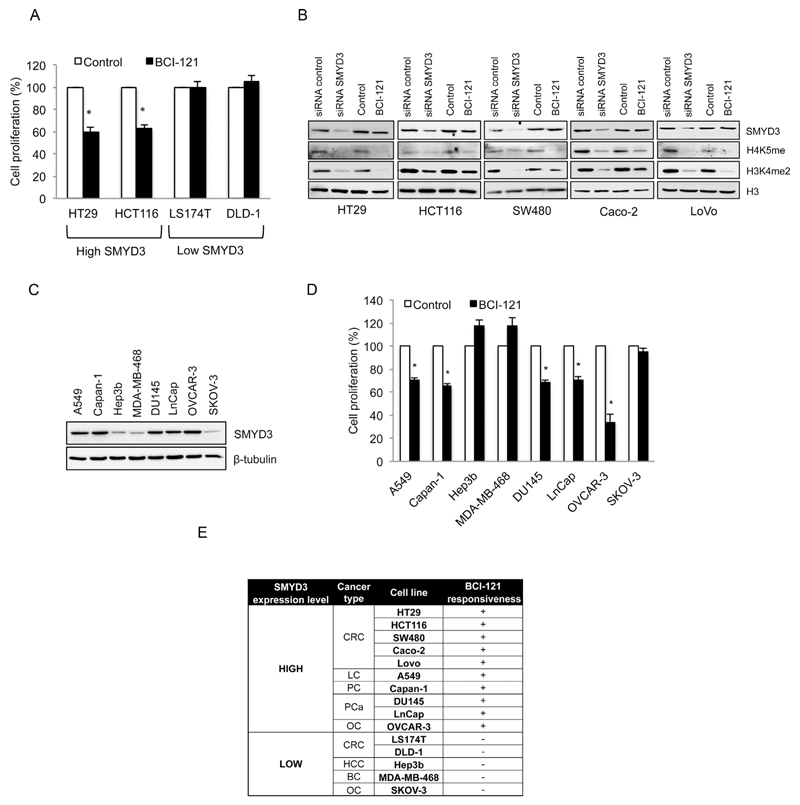Fig. 6.
Basal SMYD3 expression levels predict BCI-121 treatment response. (A) Administration of BCI-121 affects proliferation of CRC cell lines expressing high levels of SMYD3. (B) BCI-121 treatment reduces targeted histone methyl marks [H4K5me and H3K4me2] to an extent comparable to that observed with RNAi. CRC cells were treated with BCI-121 and/or SMYD3-specific siRNAs for 48 h and H4K5me and H3K4me2 global levels were evaluated by immunoblot. H3 was used as a loading control. (C) SMYD3 protein is highly expressed in several cell lines derived from different types of cancer (A549 = lung cancer; Capan-1 = pancreatic cancer; Hep3b = hepatocellular carcinoma; MDA-MB-468 = breast cancer; DU145 and LnCap = prostate cancer; OVCAR-3 and SKOV-3 = ovarian cancer). β-tubulin was used as a loading control. (D) BCI-121 treatment impaired proliferation of cancer cells with high expression levels of SMYD3, while cancer cells expressing low levels of SMYD3 were not affected. (E) SMYD3 protein levels in cell lines that proved responsive to BCI-121 treatment. Table summarizing the data obtained in the cell lines derived from the different types of cancer tested in this study [CRC, colorectal cancer; LC, lung cancer; PC pancreatic cancer; PCa, prostate cancer; OC, ovarian cancer; BC, breast cancer; HCC, hepatocellular carcinoma]. Cancer cell lines were treated with BCI-121 (100 μM) for 72 h (A) and 96 h (D) and cell proliferation was calculated using the WST-1 assay. Statistical analysis was performed using Student’s t-tail test; *P < 0.05 was considered statistically significant.

